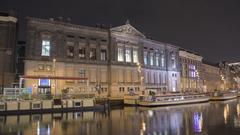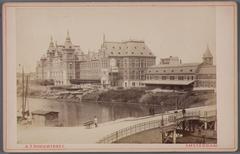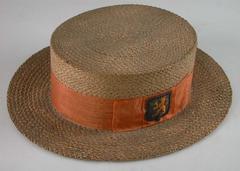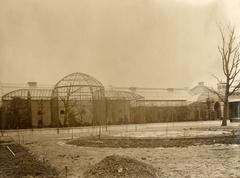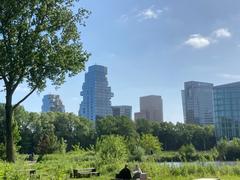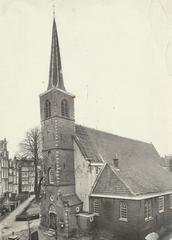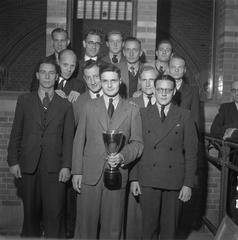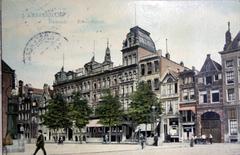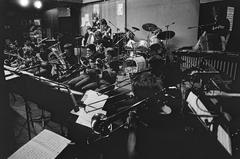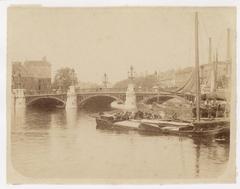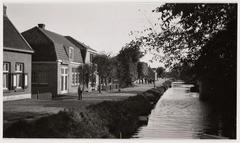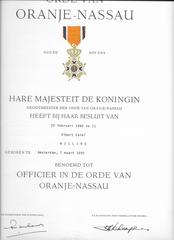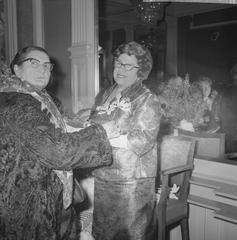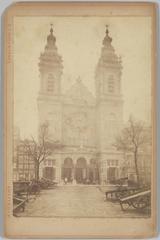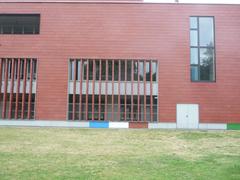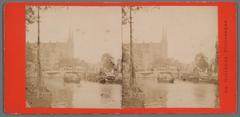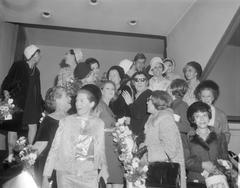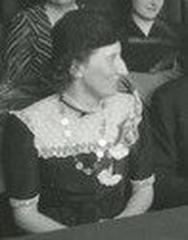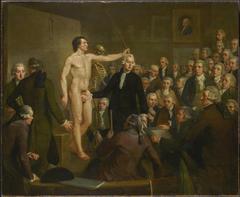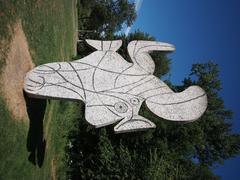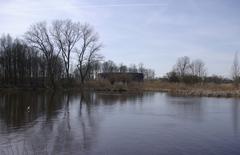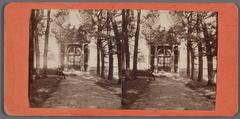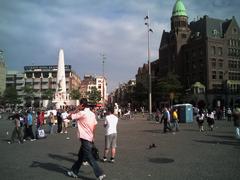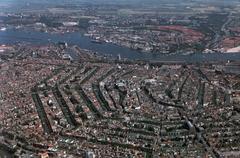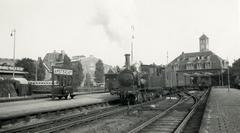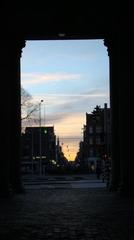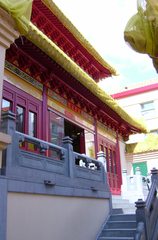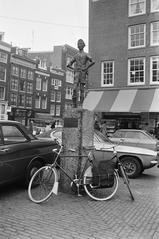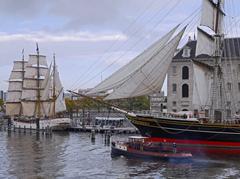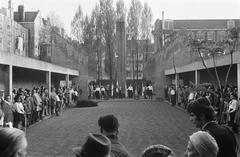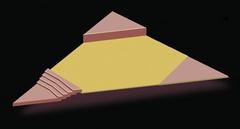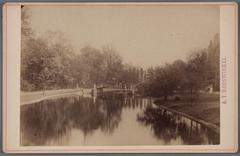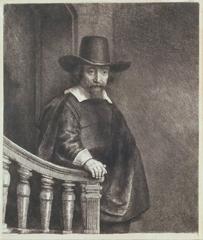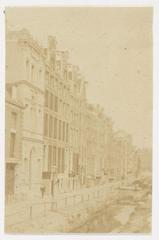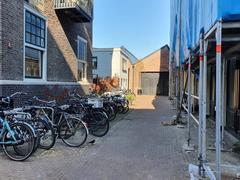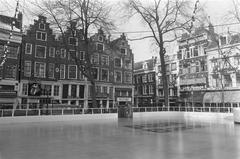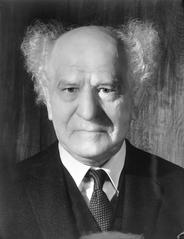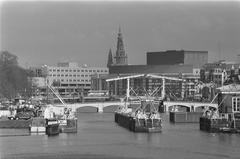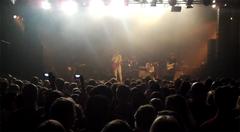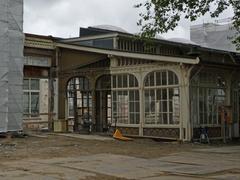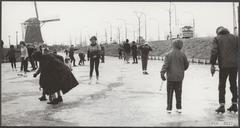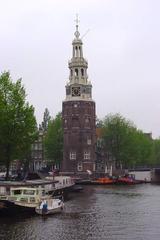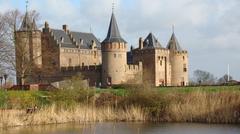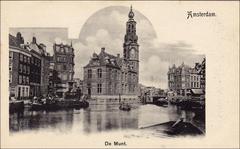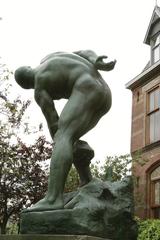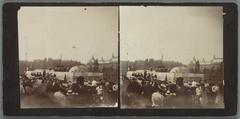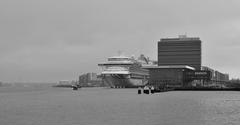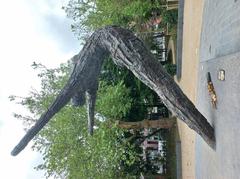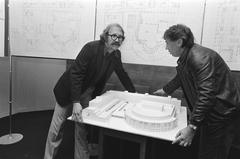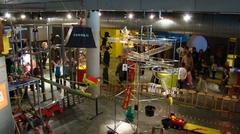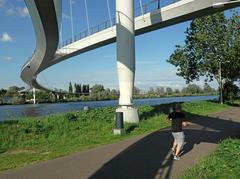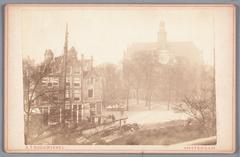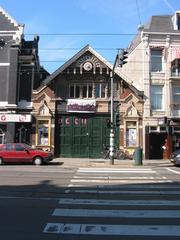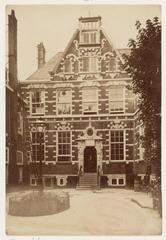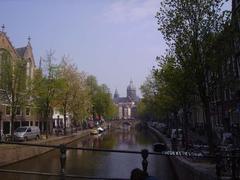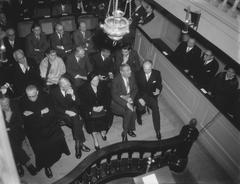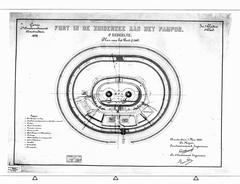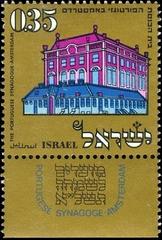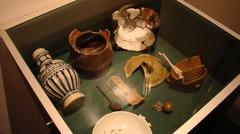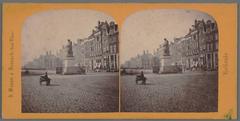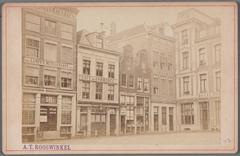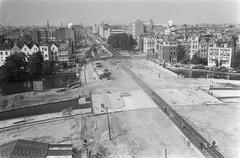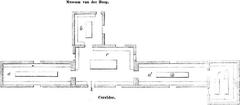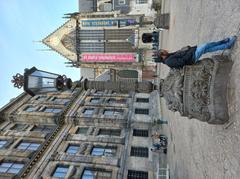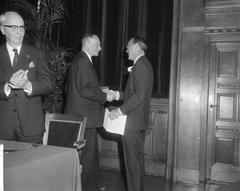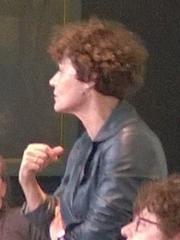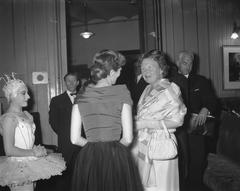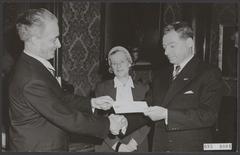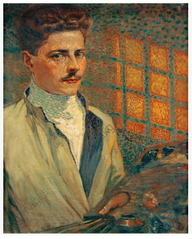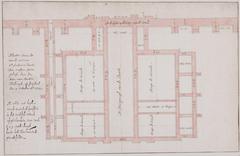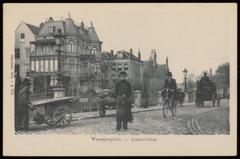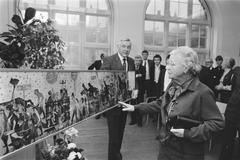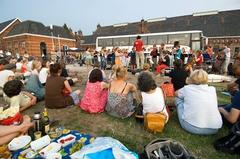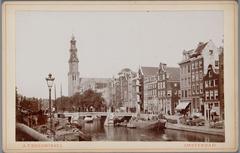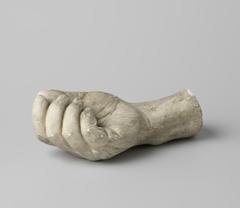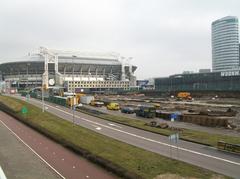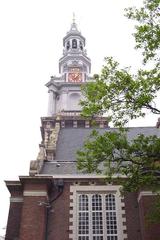
Rode Hoed Amsterdam: Visiting Hours, Tickets, and Historical Significance
Date: 04/07/2025
Introduction
Nestled along Amsterdam’s picturesque Keizersgracht canal, Rode Hoed stands as a testament to the city’s enduring spirit of tolerance, intellectual openness, and cultural vibrancy. Originally a 17th-century hatmaker’s shop, it later housed the clandestine Remonstrant church Vrijburg and has, since 1990, evolved into one of Amsterdam’s most dynamic venues for debate, music, and the arts. This guide explores Rode Hoed’s fascinating history, architectural evolution, and current role as a cultural hub, while providing practical information for visitors—including hours, ticketing, accessibility, and nearby attractions (secretamsterdam.com; rodehoed.nl).
Table of Contents
- Historical Overview
- Visitor Information
- Programming and Events
- Practical Visitor Tips
- Frequently Asked Questions (FAQ)
- Visuals and Media
- Related Articles and Internal Links
- Summary & Call to Action
- References
Historical Overview
Origins as a Hat Maker’s Shop
The story of Rode Hoed begins in the early 1600s, when the property at Keizersgracht 102 was occupied by Claes Harmensz Roothoet, a hat maker. The name “Rode Hoed” (Red Hat) references this original function, and a small red hat remains part of the building’s façade as a visual echo of its beginnings (amsterdamopdekaart.nl; secretamsterdam.com).
Transformation into a Clandestine Church
In 1630, the Remonstrant Brotherhood, a liberal Protestant group, purchased the property. At a time when Calvinism was the state religion and dissenters could not worship openly, the Remonstrants built a “schuilkerk” (hidden church) behind the canal houses. This church, called Vrijburg, allowed the congregation to meet discreetly, embodying Amsterdam’s pragmatic approach to religious diversity (theater.nl; rodehoed.nl).
Architectural Evolution
Rode Hoed’s architecture reflects centuries of adaptation. While its exterior maintains the look of typical canal houses, the interior—expanded and remodeled most significantly in the late 19th century by architect Jan Springer—features a vaulted neoclassical hall, original pulpit, and wooden galleries. Today, it is the largest and oldest surviving clandestine church in the Netherlands (amsterdamsegrachtenhuizen.info).
Role in Amsterdam’s Religious and Social Life
For more than 300 years, Vrijburg was a haven for Remonstrants and a symbol of Amsterdam’s reputation as a city of refuge for dissenters and free thinkers. The church remained active until 1957, after which the congregation moved and the building’s role shifted (rodehoed.nl).
Decline and Revival as a Cultural Center
After 1957, the building saw periods of decline and various uses—serving as a rehearsal space, offices, and at one point standing vacant. In 1989, theologian Huub Oosterhuis led efforts to restore Rode Hoed as a center for culture and debate. Reopened in 1990, the venue quickly became a leading platform for public discourse and the arts (greatervenues.com).
Monument Status and Preservation
Today, Rode Hoed is a designated Rijksmonument (national heritage site), its architectural integrity carefully maintained to preserve both tangible and intangible aspects of Amsterdam’s history (amsterdamsegrachtenhuizen.info).
Visitor Information
Visiting Hours
Rode Hoed is open during scheduled events, lectures, concerts, and services. There are no fixed daily visiting hours for casual visitors. To plan your visit, consult the official event agenda for up-to-date times (rodehoed.nl).
Tickets and Booking
Most events require advance ticket purchase due to high demand, especially for popular Candlelight Concerts and special programs. Tickets are available via the Rode Hoed website, Feverup, or the event organizer’s platform. Prices typically range from €10 to €50, depending on the event (Concerts50). The venue operates cashless; only card payments are accepted (Lonely Planet).
Accessibility
Rode Hoed strives for accessibility. The main hall is on the ground floor with step-free access; however, some areas of the historic building have narrow corridors or stairs. Visitors with mobility concerns are encouraged to contact the venue in advance for assistance (rodehoed.nl).
Getting There
- Address: Keizersgracht 102, Amsterdam.
- Public Transport: Easily reached by tram lines 1, 2, and 5 (stop: Korte Prinsengracht), and bus line 48 (stop: Keizersgracht).
- On Foot/Bike: 15-minute walk from Amsterdam Centraal Station; secure bike racks nearby.
- Car: Parking is very limited; public transport or cycling is recommended (Lonely Planet).
Nearby Attractions
Rode Hoed’s central location on the UNESCO-listed Keizersgracht canal puts it within easy reach of several key Amsterdam sites:
- Anne Frank House (0.21 miles)
- Amsterdam Tulip Museum (0.15 miles)
- Amsterdam Cheese Museum (0.14 miles)
- Huis Met de Hoofden (0.05 miles)
The surrounding Jordaan district is filled with cafés, boutiques, and scenic canal views (Lonely Planet).
Programming and Events
Annual and Recurring Events
Rode Hoed is home to a wide variety of cultural programming:
- Poetry, Reflection, and Music Evenings: Seasonal events such as “Begin van de zomer” and “Begin van de Lente,” curated by Ricky Koole, blend live music, poetry, and reflection, often featuring artists like Ruud Houweling (ruudhouweling.com).
- Ekklesia Amsterdam Services: Progressive spiritual gatherings, including the annual “Midzomerdienst” and the “Huub Oosterhuislezing” lecture (ekklesia-amsterdam.nl).
- Concerts and Candlelight Series: The venue regularly hosts acclaimed Candlelight Concerts, featuring music tributes from classical to contemporary (Concerts50; Feverup).
- Literary and Book Events: Book launches and literary evenings, such as the “Boekpresentatie TORA,” foster Amsterdam’s literary culture.
- Panel Discussions and Debates: Tafelgesprekken and public forums address social, political, and philosophical topics.
- Film Screenings: Thematic film evenings, such as “Film in de serre van de Keizersgracht,” with post-screening discussions.
Special Concerts and Cultural Highlights
Rode Hoed’s acoustics and ambiance make it a sought-after venue for concerts, including tributes to artists like The Weeknd, Adele, and Hans Zimmer. The historic setting, illuminated by flameless candles, creates a unique concert experience (secretamsterdam.com).
Practical Visitor Tips
- Book Early: Popular events often sell out weeks in advance.
- Arrive Early: Doors open 30–60 minutes before events; early arrival secures better seating.
- Dress Code: Smart-casual attire is recommended.
- Photography: Flash photography is generally discouraged during performances.
- Language: Many events are in Dutch; check listings for English-language or translated programs.
- Combine with Canal Walk: The Keizersgracht area is ideal for a scenic stroll before or after your visit.
Frequently Asked Questions (FAQ)
Q: How do I buy tickets for Rode Hoed events?
A: Via the Rode Hoed website, Feverup, or the event organizer’s platform.
Q: What are the visiting hours?
A: The venue is open during scheduled events. Check the official agenda for details.
Q: Is Rode Hoed wheelchair accessible?
A: The main hall is step-free, but some areas may be less accessible. Contact the venue for specific needs.
Q: Are events in English?
A: Many are in Dutch; some provide English content or translation.
Q: Is there parking nearby?
A: Parking is limited and expensive. Use public transport or cycle.
Visuals and Media
- Images: Photographs of Rode Hoed’s distinctive red exterior, main hall during Candlelight Concerts, and event scenes.
- Alt Text: Use descriptive alt tags such as “Rode Hoed Amsterdam historic red building at Keizersgracht” and “Interior of Rode Hoed venue with candlelight concert setup.”
- Interactive Map: Show Rode Hoed’s location and proximity to other attractions.
Related Articles and Internal Links
Summary and Call to Action
Rode Hoed Amsterdam encapsulates the city’s values of religious tolerance, free thought, and cultural innovation within a beautifully preserved historic building. Its programming—ranging from Candlelight Concerts and literary presentations to community debates and spiritual gatherings—ensures a lively, inclusive atmosphere for visitors and locals alike (secretamsterdam.com; rodehoed.nl).
To enjoy all that Rode Hoed has to offer:
- Consult the event calendar.
- Book tickets early.
- Explore nearby historical attractions.
- Download the Audiala app for personalized recommendations and easy ticket management.
Experience the harmony of tradition and innovation at Rode Hoed—one of Amsterdam’s essential cultural destinations.
References
- Rode Hoed Amsterdam: A Historical Gem with Visiting Hours, Tickets & Visitor Guide (secretamsterdam.com)
- The History of Rode Hoed (amsterdamsegrachtenhuizen.info)
- Rode Hoed Official Website (rodehoed.nl)
- Rode Hoed Amsterdam: Visiting Hours, Tickets, and Historical Significance (evendo.com)
- Rode Hoed Amsterdam Event Guide (ekklesia-amsterdam.nl)
- Rode Hoed Amsterdam: Visiting Hours, Tickets, and Guide to This Historic Venue (Lonely Planet)
- Rode Hoed Amsterdam Venue Details (Feverup)
- Amerpodia Amsterdam Cultural Venues (amerpodia.nl)
- Concerts50 Candlelight Concerts at Rode Hoed (Concerts50)






